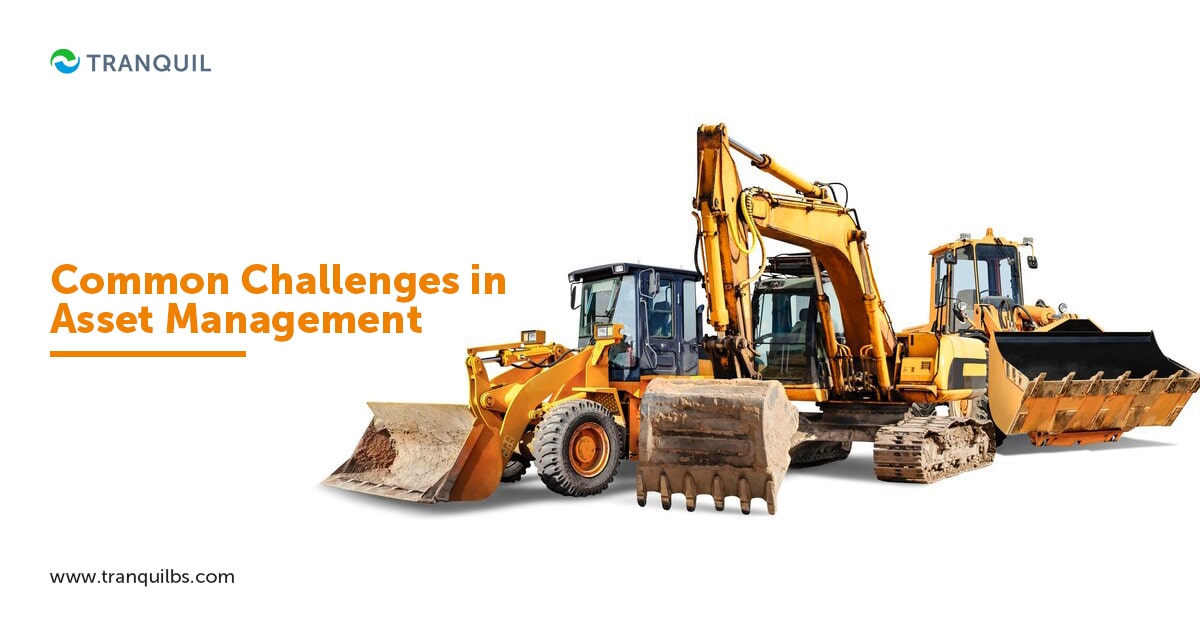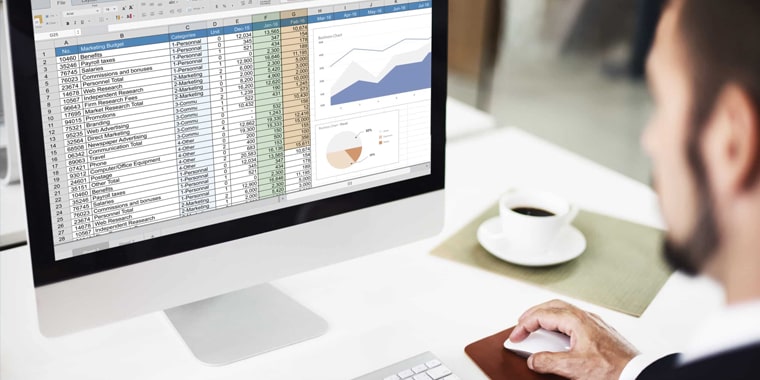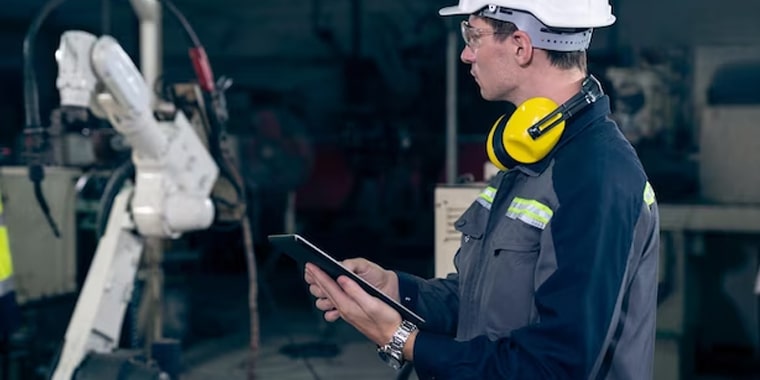
Every business needs fixed or physical assets to operate – land, machinery, computers, equipment, furniture, vehicles, and the like.
Fixed asset management involves monitoring and maintaining the physical assets of an organizations with the help of RFID tags GPS, barcodes, QR codes, IoT sensors, and more.
These codes and tags are easily scanned and read by handheld devices and smartphones.
Fixed asset management delivers several benefits to companies like:
ALSO READ: Latest Trends in Asset Management
However, there are several challenges in asset management.
The larger the organization, say, one with hundreds of assets in multiple locations – the more daunting the task becomes.
Improper management of your fixed assets can cost you dearly in the form of inefficiencies that lead to delays, dissatisfied customers, long closing of quarterly or annual books, audit risks, non-compliance, and more.
However, if performed properly, you can enjoy significant tax savings, overall improvement in efficiency and enhance your bottom line.
ALSO READ: What is Asset Tagging? Why It is Important?
Let us look at the most common asset management challenges:
Manual management and tracking of assets through their lifecycles including procurement, transfer, disposal, maintenance, additions, and more, is time-consuming and fraught with the possibilities of errors.
This can cause you to miss deadlines for closings, and overworked, overburdened staff.
Data manipulation, planning taxes, performing reconciliations, etc. can strain your resources substantially.

Spreadsheets are not only cumbersome and time-consuming, but may also cause you to neglect updates in taxation regulations, causing expensive miscalculations.
With no visibility into or automation of critical tasks, spreadsheets also hamper continuity; when the knowledge base and owner of the spreadsheet leave the company, you suddenly have no access to that information.
When it’s time for the financial year-end or quarterly closing, companies often have to collate and make sense of information flowing from various departments, reconciling data from disparate systems and manual processes, and so on.
This keeps your employees tied up in mundane administrative tasks with little to no time for analyzing the data or to strategize.
ALSO READ: ERP software in Warehouse & Fixed Asset Management
This is one of the biggest asset management problems.
When there is no visibility, you cannot be sure about how many assets you have at specific locations, you cannot track important information like the serial number or model number of assets for use in the future for tech support or servicing, if you don’t have earlier records of assets and their details.
When you have to transfer tools and small appliances among your different locations for use, it becomes even more challenging.
You cannot make intelligent decisions with regard to your assets if you don’t have a clue about what you already have, and where it is located.
With manual and paper-based systems, or outdated software, it is very difficult to share important tax information across the whole organization.
In today’s competitive business environment, it is critical that there is crystal clear visibility among departments in real-time.
Today, fixed asset management is a lot more than just ensuring compliance – they have to be a vital element of your strategy to maintain effective operations, and be efficient and reliable in your financial reports.
ALSO READ: Why Use a Barcode For Tracking Inventory And Assets?

Merely having the right equipment, machinery, and vehicles is not enough – you need to make sure they are at peak operating condition, and minimize downtime.
While you may not be able to exactly calculate the cost of machinery downtime, you can understand that it causes delays in production and/or deliveries, creating frustration among employees and dissatisfaction among customers.
Without an asset management solution in place, you will not be able to prevent unexpected breakdowns and failure of machinery and vehicles.
But by implementing a robust asset management solution, you can ensure that you schedule all machines and vehicles for regular maintenance checks and servicing, and carry out minor repairs or replacements before they become big problems.
This can reduce unexpected downtime and save costs as well.
Are you still holding on to your business software that you installed a couple of decades ago?
It may be quite inadequate for the requirements of today.
Your legacy system may not help you maintain compliance with new regulations, and it can become very cumbersome to extract data or enter it again.
Tranquil can help you in this regard; it is a robust and sophisticated ERP solution that can be customized to include functionality you need and help you avoid delays or waste resources.
ALSO READ: Ways to Improve the Procurement Process
Generating reports regularly can be daunting and can take up a lot of time; furthermore, creating flexible reports where you can categorize assets on type and depreciation of assets is even more complex.
You will have to look for ways to reconcile the differences in data and explain them.
When you don’t track your assets accurately, it is highly probable that you are not tracking their availability or the status of their warranties.
Now this could lead to actual loss of money, as you may end up paying for repairs unnecessarily.
That is, you may pay to repair a machine even though it is still in the warranty period, simply because you haven’t kept track of its warranty.
It can be very overwhelming when you have to keep on updating and gathering huge volumes of data from multiple systems and sources.
Often, companies outsource the collection, standardization, re-entry, and performing of calculations in the proper systems to third parties, just so they can keep up with the mountains of data.
You have to consider your data collection requirements not only for the present, but also for the future.
ALSO READ: Inventory Management Problems and Solutions

It is crucial that you perform an analysis of the total cost of assets in your operation, starting with the initial procurement cost, through its operation, maintenance, repairs, resale or disposal.
It is only then that you will get the right financial picture that empowers you to make decisions that are the most cost-effective.
When you delve deep into the costs of equipment and vehicles, labor, maintenance costs, lubricants, fuels, and other consumables, only then will you get a true picture of the costs from acquisition to disposal.
When you are able to efficiently manage the total cost of ownership of your fleet, you can ensure that your operations are more productive and economical, and meets the objectives of efficiency as well.
If a company merges with another, acquires, or is acquired by another company, the organizations involved have to combine the data relating to their new fixed assets with that of the existing ones.
They will have to implement robust controls and processes in order to ensure that their acquisition strategies are feasible.
ALSO READ: What is Stock Adjustment and Stock Transfer?
Deciding if an asset must be replaced or repaired is a common dilemma that asset managers face.
If you take the incorrect decision, the business can be badly affected; either because you had to pay too much, or because you have to face the expenses caused by machine breakdown and downtime.
When you don’t have the correct data to evaluate and guide the managers, the decision to repair or replace is pure guesswork – you might as well draw lots!

In the absence of a proper method to identify an asset firmly and accurately, you have no way to know whether your employees on-site are using the right equipment or machinery to create a work order.
When there is an emergency service, time is precious, and the wrong decisions can cause costs to spiral, if your field tech is not sure which asset has to be serviced or repaired.
Mind you, there is a danger of the wrong asset being serviced, even if it is a routine service – if you don’t identify and tack assets properly.
ALSO READ: Emerging HR Trends for 2023 and Beyond
One huge problem which most organizations and asset managers fail to realize is the huge amount of time that is spent in maintaining assets.
Managers who are striving to manage important business assets without the right software and tools, especially face this issue.
This is more so for finance managers who have several other responsibilities to discharge; their time, which they spend in managing the organization’s fixed assets, is in itself the greatest cost.

In any company’s budget, a significant portion is assigned to spends on capital assets and equipment; this does have a substantial effect on your profitability.
To be able to make huge decisions, like investing in new equipment – fixed assets – requires access to accurate, detailed, clean, and current data across the location portfolio; only then will the decisions be strategic and intelligent.
It is imperative that a business has proper knowledge of asset inventory, the cost per asset through its life cycle, its service and maintenance history, and more.
And this can only be possible with a proper asset management solution that records, maintains, and tracks equipment across the company.
ALSO READ: What is Negative Inventory?
While its true that these are the challenges you could face, you don’t necessarily HAVE to. That is because you can implement Tranquil ERP which has a feature-packed asset management module that will help you manage all your assets across multiple locations smoothly and easily. Combined with tagging your assets, you can ensure that you repair and service the machinery or vehicles on a regular basis and avoid unpleasant surprises. You can make sure that all your fixed assets are in optimal running condition and even extend their working life. If you’re not sure how our software can help, simply ask for a FREE demo, and we can take you through it.